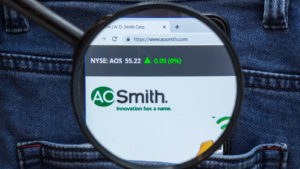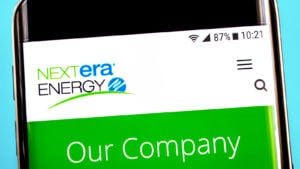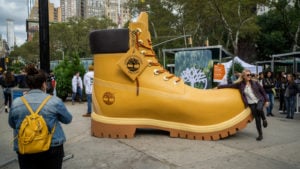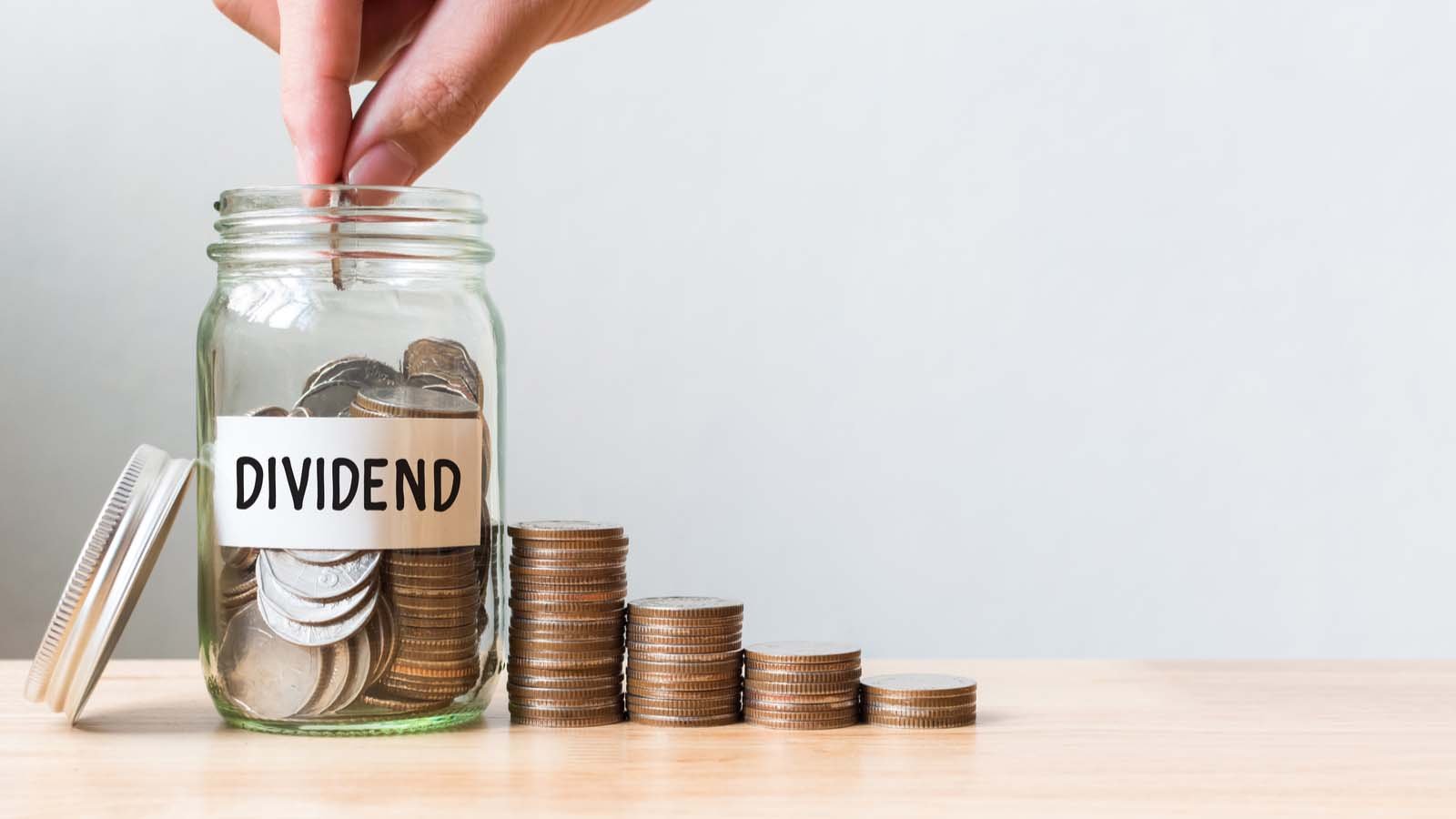Heading into 2020, S&P 500 dividend stocks had averaged 8.1% dividend growth over the previous five years. In 2020, thanks to Covid-19, that growth slowed to a trickle, up by a scant 0.07%. Now halfway through 2021, dividend payouts for the S&P have reversed course, presently down by 3.05%.
Many companies have slowed their payouts or cut them out entirely to save cash. So for income investors looking to generate dividend growth, the natural place to look is the 65 Dividend Aristocrats that have increased their annual dividends for at least 25 consecutive years.
I’ve been tasked with coming up with a list of the 10 best dividend income growers of the S&P 500. I’ll be sure to consider the Dividend Aristocrats before widening my search.
What I do know is that to make the list, a company will have to have a dividend growth rate over the past 10 years of at least 10%.
Here are the 10 best dividend growers in the S&P 500:
- AbbVie (NYSE:ABBV)
- Automatic Data Processing (NASDAQ:ADP)
- A.O. Smith (NYSE:AOS)
- Hormel Foods (NYSE:HRL)
- Medtronic (NYSE:MDT)
- NextEra Energy (NYSE:NEE)
- Sherwin-Williams (NYSE:SHW)
- S&P Global (NYSE:SPGI)
- Target (NYSE:TGT)
- VF Corporation (NYSE:VFC)
Without further ado, let’s take a look at these excellent dividend stocks to buy.
S&P 500 Dividend Stocks to Buy: AbbVie (ABBV)

Sector: Healthcare
10-Year Dividend Growth Rate: 18.50%
It’s been 8 and a half years since Abbott Laboratories (NYSE:ABT) spun off its branded drug unit into a publicly-traded company. At the time, AbbVie had annual revenue of $18.4 billion. Half of its annual sales came from Humira, the company’s biologic therapy intended to treat autoimmune diseases such as psoriasis, rheumatoid arthritis, Crohn’s disease and the like.
Today, ABBV has $45.8 billion in sales (2020) and $11.4 billion in operating earnings. Humira now accounts for 43% of its overall sales, down from 61% in 2018. AbbVie increased its quarterly dividend by 10.2% to $1.30 per share with its February dividend payment. An annualized dividend of $5.20 yields 4.5%.
In the first quarter ended March 31, worldwide revenues increased 5.2% to $12.94 billion, with Humira accounting for $4.87 billion of those sales. In addition, it paid out $2.32 billion in dividends in the first quarter, 31.7% higher than in Q1 2020. AbbVie also repurchased $787 million of ABBV stock.
Automatic Data Processing (ADP)

Sector: Technology
10-Year Dividend Growth Rate: 11.85%
Often referred to as ADP, the company flies under the radar for many investors despite being the largest provider of payroll services in the U.S. But this company does a lot more than just processing your bi-weekly paycheck. It also provides human resources outsourcing solutions to businesses of all sizes.
During fiscal 2020, ADP made $14.6 billion in revenue — Employer Services accounted for 69% of sales, with PEO Services accounting for the rest — yielding adjusted earnings per share of $5.92. Its Employer Services margins are a healthy 30.3%.
With its January 2021 dividend increase of 2.2% to $0.93, ADP stock’s annualized dividend of $3.72 yields 1.8%.
In the third quarter ended March 31, ADP’s revenues increased 1% to $4.1 billion, with adjusted net earnings of $810 million. In addition, it paid out $1.18 billion in dividends during the third quarter, 9.4% higher than in Q3 2020. It also repurchased $903 million of ADP stock.
A.O. Smith (AOS)

Sector: Industrials
10-Year Dividend Growth Rate: 21.9%
It’s good to see A.O. Smith doing well again. AOS went through a dry spell over the past five years — 3-year and 5-year annualized total returns of 6.9% and 10.7%, respectively, through July 8 — but it’s back, up 29.3% year-to-date (YTD), double the U.S. markets as a whole.
It makes commercial and residential water heaters and water treatment equipment if you’re unfamiliar with the company. I first became aware of the company because of its expansion into China a decade ago. I found its tankless heaters fascinating.
Back in 2012, I called this a company to own forever. Despite its lull in recent years, it’s up almost 500% since then and remains a stock to own forever.
A.O. Smith last increased its dividend with the November 2020 payment. With that 8.2% dividend increase, it now pays an annualized dividend of $1.04, yielding 1.5%.
In the first quarter ended March 31, company revenues increased 21% to $769 million with net earnings of $97.7 million, 89% higher than Q1 2020. In addition, AOS paid out $42.2 million in dividends in the third quarter, 8.2% higher than in Q1 2020. It also repurchased $67 million of AOS stock.
Hormel Foods (HRL)

Sector: Consumer Staples
10-Year Dividend Growth Rate: 16.04%
As of June 7, Hormel became the home of Mr. Peanut after the company closed its $3.35 billion acquisition of Kraft Heinz’s (NASDAQ:KHC) Planters nut business. Other brands in the purchase include Cheez Balls and Corn Nuts. HRL also picked up three production facilities.
With the acquisition, Hormel became a peanut powerhouse, bringing Planters together with its Skippy brand of peanut butter and the many other packaged food brands it owns.
Hormel’s been a Dividend Aristocrat for 55 years now. Its February 2021 dividend increase of 1.3% to $0.2450 pays an annualized dividend of $0.98, which yields 2.1%. It paid out $132.3 million in dividends in its latest quarter, 6.3% higher than a year earlier.
In the first half of 2021, Hormel delivered record results. In May it raised its guidance for the entire fiscal year to sales of at least $10.2 billion, with $1.70 in earnings per share. And that guidance doesn’t include the Planters acquisition.
Hormel is a steady-as-she-goes kind of stock. You won’t hit a home run, but you’ll definitely protect your portfolio’s downside.
Medtronic (MDT)

Sector: Healthcare
10-Year Dividend Growth Rate: 10.05%
The second of two healthcare stocks on my list, Medtronic’s medical devices such as pacemakers, defibrillators and insulin pumps help people live normal lives. You’d think that this would translate into a major performance for its stock.
Yet, a quick look at MDT’s performance over the past 15 years reveals a stock that’s struggled to keep up with its industry peers and the U.S. markets as a whole.
So why own this sector laggard? Hugo, the company’s robotic-assisted surgical system, performed its debut surgery at the end of June.
Unlike Intuitive Surgical’s (NASDAQ:ISRG) da Vinci surgical system, Hugo can be moved to different hospital areas. That’s a major advantage. But, unfortunately, ISRG has such a head start, it might not matter.
But it’s something.
The company increased its July 2021 dividend by 8.6% to $0.63. The annualized dividend payment of $2.52 yields 2%. It is Medtronic’s 44th consecutive year increasing its dividend.
NextEra Energy (NEE)

Sector: Utilities
10-Year Dividend Growth Rate: 10.84%
After delivering years of performance — the 15-year annualized total return of 15.3% is 50% higher than the U.S. markets as a whole — NextEra’s stock has gone ice cold, down 1.6% YTD.
If you don’t believe in reversion to the mean, you might want to check out NEE. It’s struggling at the moment, but that won’t last.
Barron’s recently covered CEO James Robo’s nine-year run as chief exeutive for the utility. It currently controls 22 gigawatts (GW) of renewable power, primarily generated by wind turbines. Per the article, that’s enough to power seven million homes. By 2024, NEE expects to generate 44 GW of renewable power.
Already the largest utility in the U.S. through its Florida Power & Light Subsidiary, renewables will deliver major rewards for patient investors.
In January 2017, I argued that NEE should be added to the Dow Jones Industrial Average. Since then, it’s gained 149%. Even all those years ago, it was obvious NextEra was becoming a major player in renewable energy.
As for the dividend, NEE increased the quarterly payment by 10% in March to $0.3850. The annualized payment of $1.54 yields a reasonable 2.1%. In both March 2020 and March 2021, NEE had major corrections. Smart investors were buying on those declines.
NextEra Energy is a must-own in any diversified portfolio.
Sherwin-Williams (SHW)

Sector: Materials
10-Year Dividend Growth Rate: 14.05%
In early June, Sherwin-Williams increased its sales guidance for the second quarter and all of 2021. It now expects full-year sales to increase by high single-digits or low double-digits over 2020. On the bottom line, it expects adjusted earnings of at least $9.15 a share.
While it continues to experience higher input costs, market demand is such that the company can increase prices to cover raw material inflation. Of course, not every industry can say that. But when you’ve got a strong housing market, the world is your oyster.
In March, the paint and coatings company increased its quarterly dividend by 23% to $0.55 a share — the dividend reflects a 3-for-1 split on April 1 — it is the 42nd consecutive year with an increase. It also plans to buy back up to 15 million of SHW shares.
In Q1 2021, Sherwin-Williams paid out $151.8 million in dividends and repurchased $775.4 million of its shares. During the quarter, sales rose 12.3% to $4.66 billion, while adjusted earnings increased 51.5% to $2.06 per share.
In March, I recommended 10 stocks to buy that were trading around $1,000. SHW was one of those. Over the past 15 years, it has an annualized total return of 21.3%, double the markets.
It’s a keeper even before its healthy dividend.
S&P Global (SPGI)

Sector: Financial Services
10-Year Dividend Growth Rate: 11.05%
Investing.com featured a list of the 10 top-rated stocks by analysts in June. S&P Global was one of the stocks. Of the 14 analysts that cover its stock — I’m shocked it’s that few — 10 rates it a buy, two have it overweight and two see it as a hold. None of the 14 has it as a sell. The 12-month median target price is $445. That’s good for 8% upside.
I wouldn’t be dissuaded from owning its stock just because analysts view it as fully valued. It’s a stock that’s delivered over the long haul for shareholders — it has a 10-year annualized total return of 26.3%.
In April 2020, I recommended SPGI for several reasons, including a growing dividend. However, it is free cash flow (FCF) that really caught my attention. S&P Global grew FCF in 2019 by 40.1% to $2.5 billion. The company estimated it would grow FCF in 2020 by 3% — 7%. It actually grew FCF by 31% to $3.49 billion. For the trailing 12 months ended March 31, FCF is $3.57 billion.
You’re not going to get rich from S&P Global’s dividend — it currently yields 0.80% — but you will make money over the long haul.
In the second half of 2021, the company is expected to close its all-stock transaction with IHS Markit (NYSE:INFO). The $44 billion deal creates one of the world’s biggest fintechs. SPGI shareholders will own 67.75% of the company, with INFO shareholders owning the rest.
Target (TGT)

Sector: Consumer Discretionary
10-Year Dividend Growth Rate: 12.30%
Since Target CEO Brian Cornell took the top spot on July 31, 2014, the company’s market cap has grown from $38.9 billion to $123 billion, a compound annual growth rate of 17.9%.
That might not sound like a lot, but you have to remember where Target was when Cornell came aboard. It had sprung several leaks and was no longer an industry leader. So the CEO had to change the way it did business.
He’s succeeded. Cornell turned around the discount retailer’s fortunes by renovating stores, adding a ton of private label brands and growing its e-commerce business.
Amazingly, you can buy TGT with a 1.5% yield despite the fact it’s hitting out of the park from a business perspective. In Q1 2021, TGT had same-store sales (SSS) growth of 22.9% — 18% SSS for brick-and-mortar and 50% e-commerce SSS growth.
During the first quarter, it gained more than $1 billion in market share. In fact, every metric you can think of was through the roof.
Over the past 12 months, Target’s generated $7.94 billion in free cash flow. Annualized, it’s paid out approximately $1.4 billion in dividends. It also repurchased $1.31 billion of its stock in the first quarter.
In 2019, Target had $11.9 billion in net debt. However, in the trailing 12 months ended March 31, it was $7.2 billion, 39% less than at the end of 2019.
Brian Cornell is right up there with former Best Buy (NYSE:BBY) CEO Hubert Joly as the greatest retail story of the 2000s.
VF Corporation (VFC)

Sector: Consumer Discretionary
10-Year Dividend Growth Rate: 12.94%
Could VF Corporation be the absolute best argument against apparel conglomerates? That’s a real possibility.
Once considered the best company in apparel, the performance of VFC stock over the past five years — a total return of 8.5%, half the performance of the U.S. markets as a whole — suggests that a multi-brand model drags the winners down rather than providing the diversification necessary to avoid significant losses.
On June 29, VFC closed the sale of the occupational segment of its Work segment. Divested brands include Red Kap, VF Solutions, Bulwark, Kodiak and others. The sale did not include Dickies, which it bought in October 2017 for $820 million.
So after several years of pruning, VFC is essentially four brands: Vans, The North Face, Timberland and Dickies. In Q4 2021, sales of the four brands increased by an average of 18%. Business is good. Yet, its stock is down 4.2% YTD.
Investors aren’t quite fully committed to CEO Steve Rendle’s game plan. This, despite the fact its adjusted net income grew by 167% in Q4 2021 to $106 million.
Between direct-to-consumer (DTC), international growth and its Big 4 brands, VFC shareholders have a lot to look forward to in the years ahead. And yet, the stock lags.
Currently, VFC has a TTM FCF of $1.04 billion. Based on a market cap of $32.4 billion, it has an FCF yield of 3.2%. In a year, its FCF yield will be close to 7%.
Buy now and get paid 2.4% to wait for its grand plan to gain traction.
On the date of publication, Will Ashworth did not have (either directly or indirectly) any positions in the securities mentioned in this article. The opinions expressed in this article are those of the writer, subject to the InvestorPlace.com Publishing Guidelines.
Will Ashworth has written about investments full-time since 2008. Publications where he’s appeared include InvestorPlace, The Motley Fool Canada, Investopedia, Kiplinger and several others in both the U.S. and Canada. He particularly enjoys creating model portfolios that stand the test of time. He lives in Halifax, Nova Scotia. At the time of this writing Will Ashworth did not hold a position in any of the aforementioned securities.
